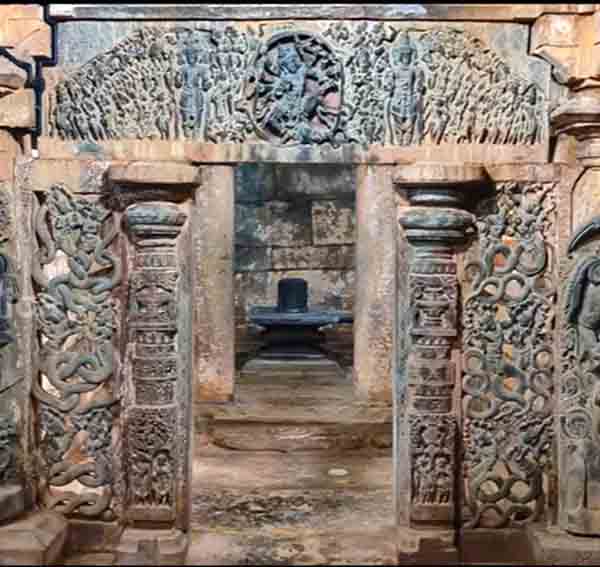The Tripurantaka Temple (also known as Tripurantakeshwara Temple) situated in the north – east part of Balligavi is an outstanding example of sculptural beauty of the 11th century. The temple was commissioned by Maharaja Someshwara II of the Western Chalukyas in 1070 CE with additions made by the Hoysalas.
This temple has two east – facing shrines sitting on a high platform with intricately carved balustraded steps. Both the temples have an ardha mandapa, an antarala and a garbha griha in the west.
The plan and design of the temple has been slightly altered under the Hoysalas that is visible from the workmanship seen in northern part of the temple complex, the southern shrine and the central part of the south pavilion.
On either side of the Dwarapalakas at the entrance of the southern shrine are profusely decorated perforated windows of dancers in different poses. The detailing on the round pillars with extended brackets and figures, door frames and entrance doorways resemble the work at Belur and Halebid. The doorway of the south shrine in particular is a visual delight with bands of flowers, dancers and intertwined Nagas. Gajalakshmi with an elephant on either side sits on the Lalata Bimba of this shrine.
However, it is the lintel of the main shrine that depicts the Puranic story of Gajasurasamhara to perfection that leaves you awestruck. Lord Shiva is seen standing over Gajasura in all His glory wearing a diadem and wielding several weapons in His arms. Lord Brahma, Lord Kartikeya and Lord Ganesha are to His right while Lord Vishnu, Lord Garuda and others are to His left. Various deities have also been carved on this impressive panel.
Both the shrines are connected to the maha mandapa that is supported by square – based circular pillars. There are entrances in the east and south.
The base of the plinth of the temple is adorned with stories from the Panchatantra. There are beautiful sculptures of erotica on the external walls which appear to have been carved later.
Written by Lakshmi Subramanian


Leave a comment